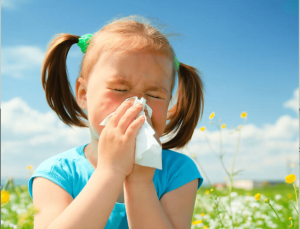How to feed allergy sufferers

A hypoallergenic diet should be followed not only for food allergies and atopic dermatitis, but also for any other allergic diseases (allergic rhinitis, allergic laryngotracheitis, bronchial asthma, hay fever).
Such a diet is prescribed taking into account the individual characteristics of the disease in each child separately, paying attention to allergies to specific foods. So, for example, a hypoallergenic diet is dairy, dairy-free, taking into account the intolerance of certain types of cereals, etc.
With a non-specific diet, the following are excluded from the diet:
“Obligatory allergens”, i.e. foods that most often cause allergic reactions (eggs, fish, seafood, legumes: peas, beans, soy, peanuts; nuts, honey, strawberries, pomegranate, kiwi, melon, black currant, mushrooms).
Extractive substances, seasonings (spices, spices) that irritate the mucous membrane of the gastrointestinal tract and increase its permeability to food allergens. The elimination of extractive substances is achieved by replacing meat broths with soups based on vegetable broths, fried vegetables and meat – boiled and steamed.
Dishes and products containing additives (dyes, preservatives, spices). Among the dyes: tartrazine (E 102) and yellow-orange dye (E 110). Preservatives – benzoic acid (E 210), benzoates (E 211-219), sorbic acid (E 200-203). Flavoring additives – sodium glutamate (E 621) and similar ones (E 622-625). Canned food, smoked meats, gastronomic products, carbonated drinks, etc. are excluded.
Foods rich in histamine (an element that causes inflammation) such as sauerkraut, spinach, ham, fermented cheeses, soy, cocoa, tomatoes.
Histamine liberators (foods that enhance the production of histamine) – strawberries, citrus fruits, chocolate, coffee, tomatoes, bananas, peanuts, fish.
Some products appear in several positions, since they can also be allergens and histamine liberators (for example, chocolate, citrus fruits, peanuts, etc.)
It is not uncommon for children with food allergies https://en.wikipedia.org/wiki/Food_allergy to tolerate cereals. Most often, there is intolerance to rye, wheat, less often – to oats, rice, corn, buckwheat, barley.
With age, in children from 2 to 7 years of age, hypersensitivity to foods such as cow’s milk, eggs, and wheat decreases. While in older children, the role of allergens such as fish, celery, peanuts, almonds, hazelnuts, cashews, and tomatoes is increasing.
Allowed subject to portability:
various cereals (except semolina);
fermented milk drinks (kefir, biokefir, bifilin, narine, acidophilus);
mild cheese varieties;
lean meat (beef, pork, rabbit, turkey);
specialized canned meat for baby food;
from vegetables – all types of cabbage, zucchini, squash, light pumpkin, parsley, dill, young green peas, green beans;
fruits and berries – green apples, pears, light cherries and plums, gooseberries;
juices from the above fruits and berries are diluted 1/3 with boiled water;
large leaf black tea, no flavors;
refined vegetable oil (corn, sunflower, olive);
bread, – “gray” varieties: “Darnitskiy”, cereal bread, unsweetened corn and rice sticks and flakes, simple drying.
Pre-treatment of some products is used: potatoes, peeled and finely chopped, are soaked in cold water for 2-12 hours, the rest of the vegetables and cereals are soaked for 1-2 hours, the meat is subjected to double digestion.